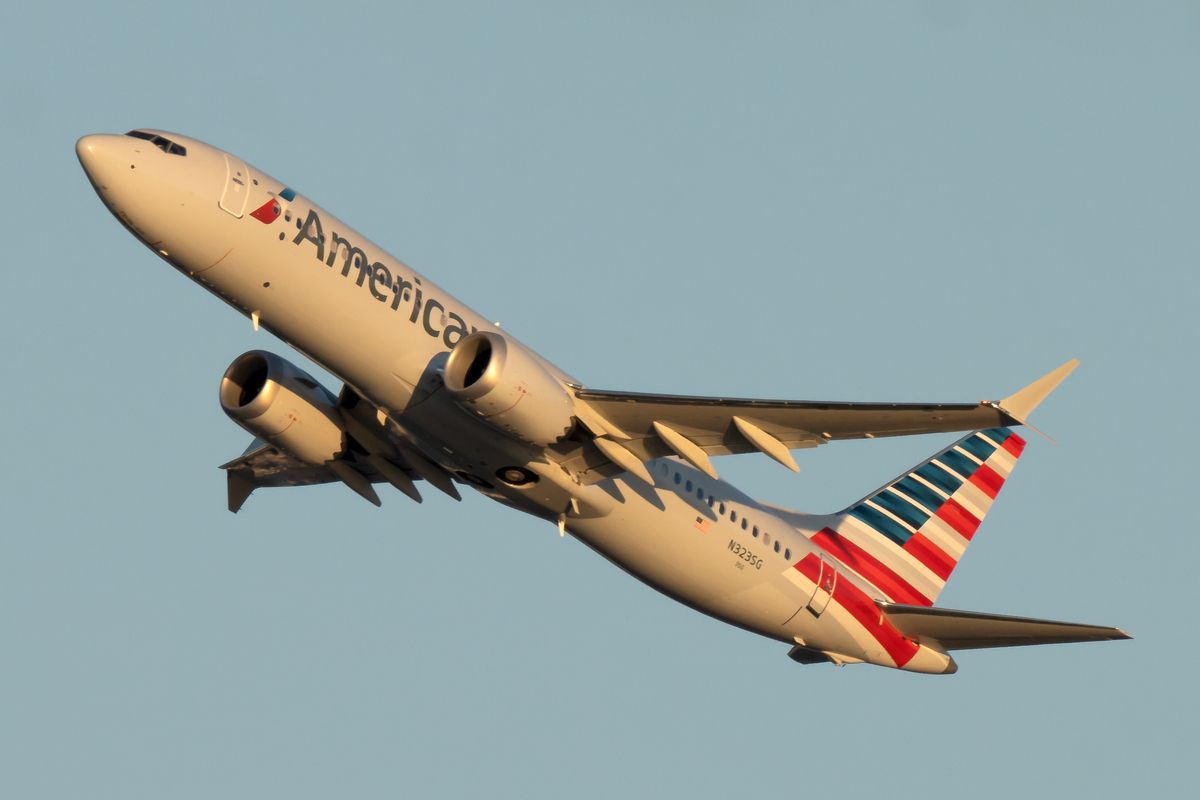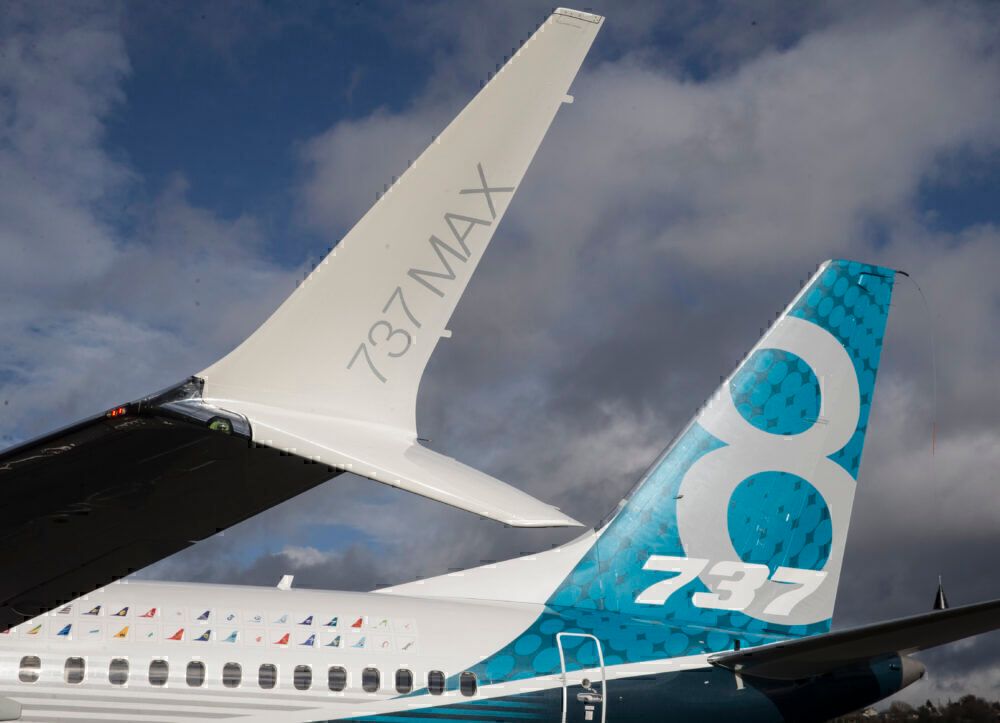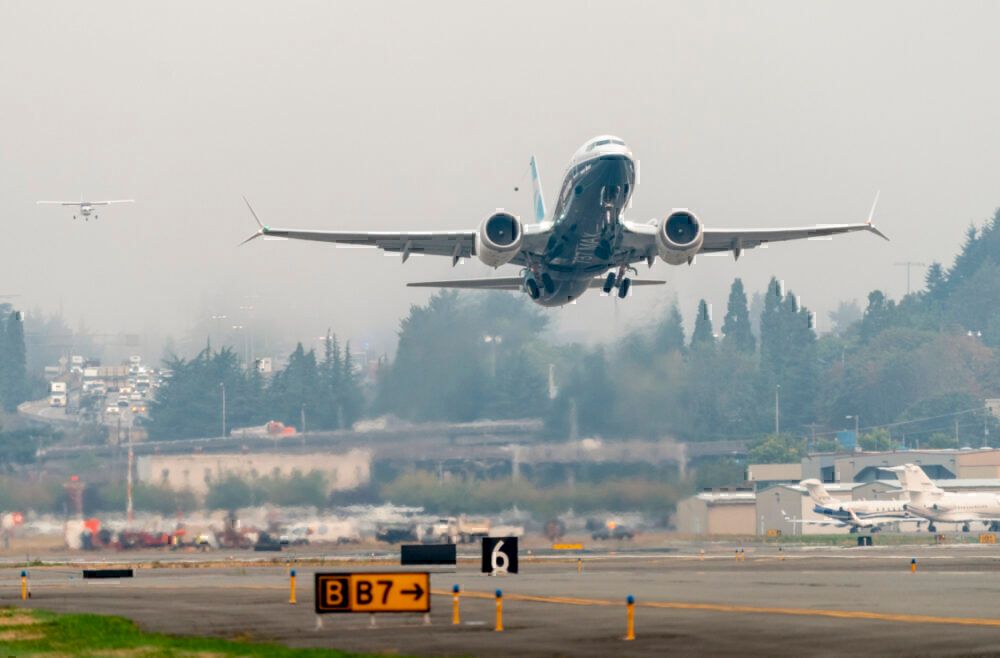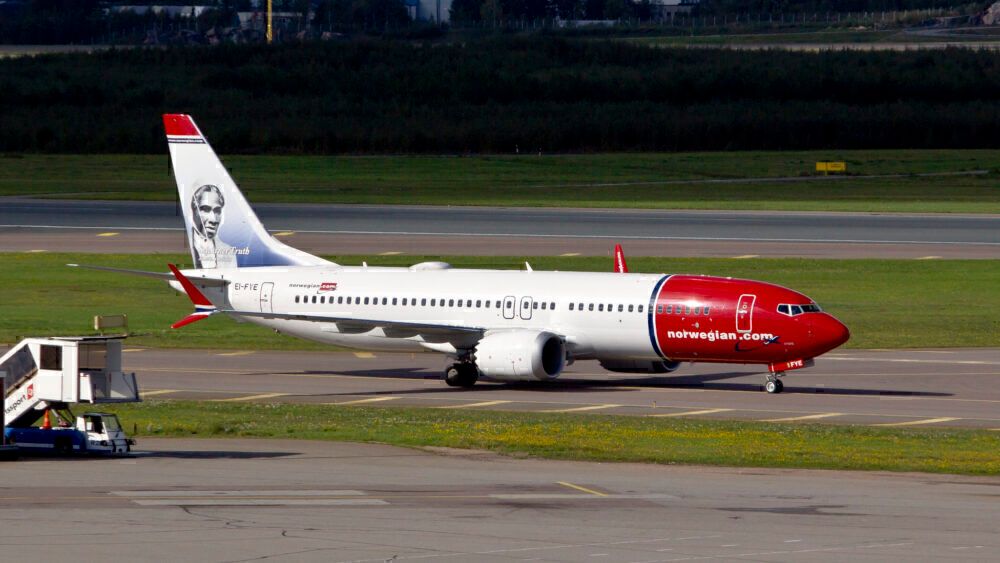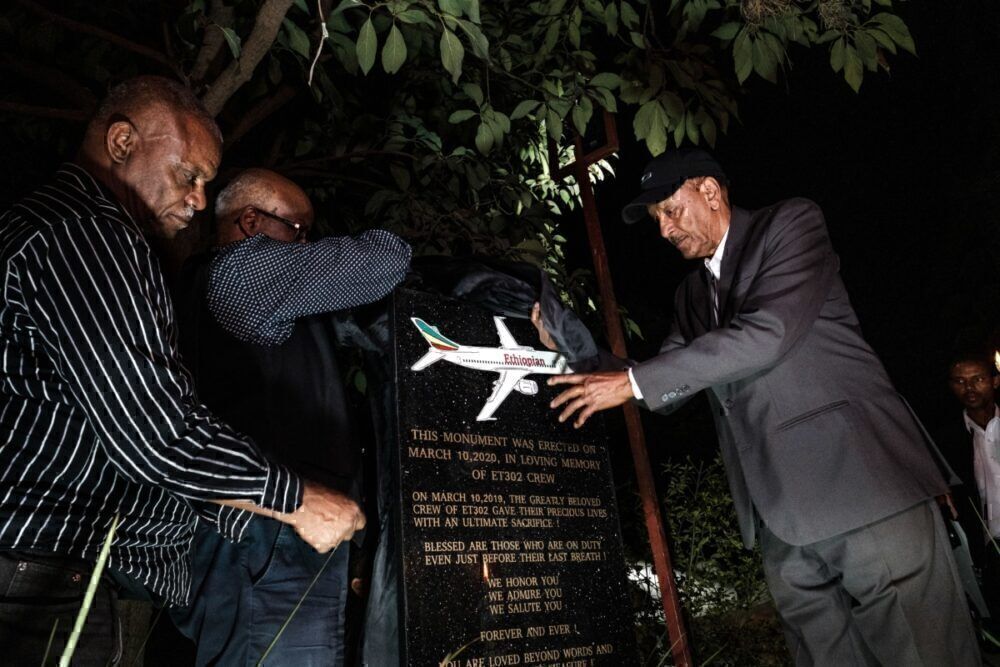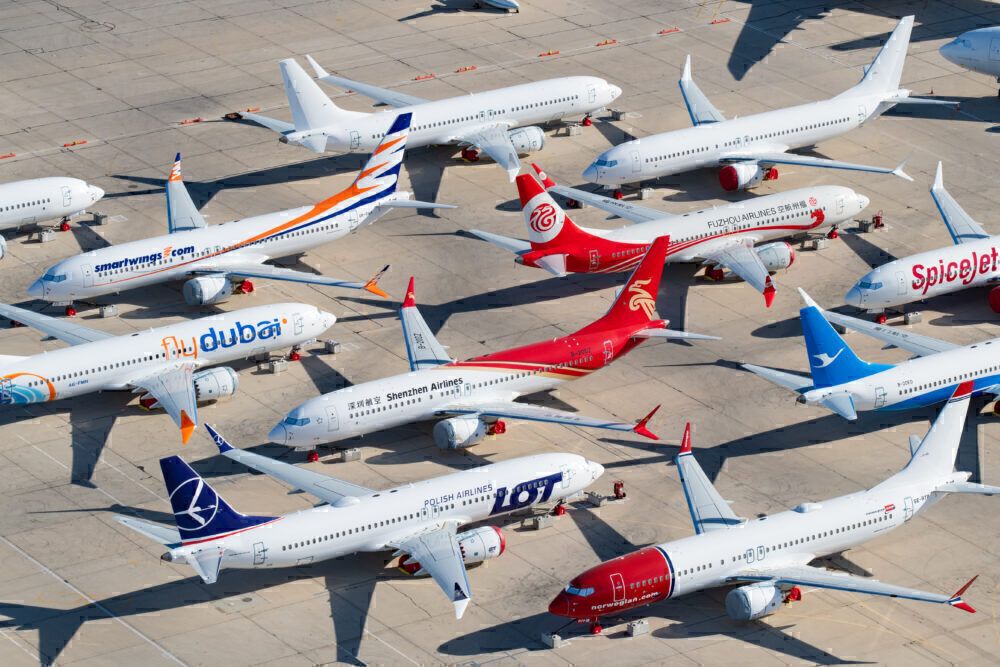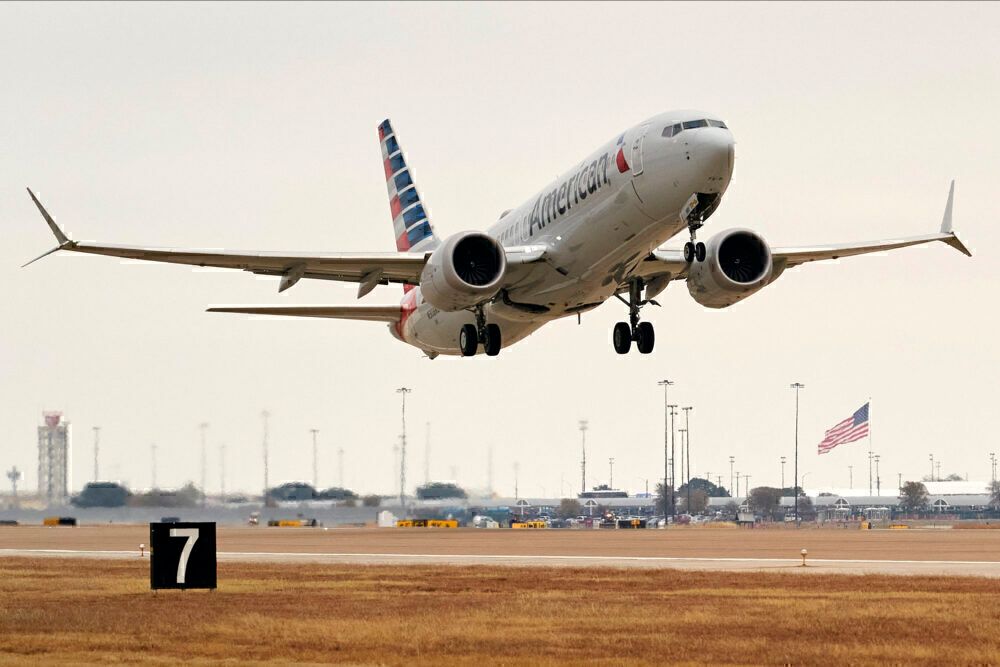Events in recent years have seen the Boeing 737 MAX become one of the most controversial aircraft of its generation. Today, it sees limited (but increasing) commercial service after almost two years on the ground. But where did it all begin for Boeing's next-generation single-aisle twinjet airliner?
The first test flight
Five years ago yesterday, on January 29th, 2016, the Boeing 737 MAX took to the skies for the first time. This maiden voyage involved the MAX 8, the type's second-smallest variant after the MAX 7. It marked the latest step in almost half a century of 737 history, with the original 737-100 having made its first flight 49 years previously in 1967.
The flight departed Renton Municipal Airport, Washington (RNT) at 09:46 local time. After two hours and 47 minutes of flight, the MAX landed just outside Seattle at the nearby Boeing Field/King County International Airport (BFI) at 12:33 local time.
The test flight did not particularly push the aircraft towards its operational limits, flying up to 25,000 feet at speeds of up to 250 knots (463 km/h). Nonetheless, it provided a good opportunity to test its structures and systems.
Stay informed: Sign up for our daily aviation news digest.
While 737 MAX Chief Pilot Ed Wilson and Boeing Chief Test Pilot and Vice President of Flight Operations Craig Bomben flew the aircraft, a team on the ground was able to receive and analyze flight testing data in real-time. Onboard data transmission on the test aircraft made this analysis possible.
Positive reactions
The test flight was met with a highly positive reaction from Boeing. In a press release seen by Simple Flying, president and CEO Ray Conner stated afterward that:
"Today's first flight of the 737 MAX carries us across the threshold of a new century of innovation - one driven by the same passion and ingenuity that have made this company great for 100 years. We are tremendously proud to begin testing an airplane that will deliver unprecedented fuel efficiency in the single-aisle market for our customers."
The test flight's pilots also shared Conner's positivity towards the new aircraft. Captain Wilson said the following in the release:
"The flight was a success. The 737 MAX just felt right in flight, giving us complete confidence that this airplane will meet our customers' expectations."
At this stage, Boeing was expecting to complete the MAX's "first delivery to Southwest Airlines in the third quarter of 2017." However, the type's commercial introduction came quicker than the American manufacturer was expecting.
Introduction into commercial service
In May 2017, Malaysian full-service carrier Malindo Air became the first airline to receive a 737 MAX, taking delivery of a MAX 8 on May 16th. It entered service with the Lion Air subsidiary six days later.
Norwegian soon became the second airline to receive the MAX, operating its first transatlantic flight with a MAX 8 between Edinburgh and Bradley International, Connecticut on July 15th. As planned, Dallas-based low-cost carrier Southwest received its first MAX in 2017's third quarter. Specifically, this occurred on August 29th.
Overall, the first year of MAX service saw a total of 130 deliveries to 28 customers worldwide. However, not long afterward, the type became infamous after a pair of strikingly similar accidents.
A tale of two tragedies
In October 2018, a Lion Air MAX 8 crashed in the sea just north of Jakarta shortly after takeoff from the Indonesian capital. Just five months later, in March 2019, an Ethiopian Airlines MAX 8 suffered a similar catastrophe after departing from Addis Ababa. Overall, all 346 passengers and crew onboard flights JT610 and ET302 perished in the two crashes.
The second of these disasters was soon found to have striking similarities to the first. This led to the type's grounding by various aviation safety agencies worldwide over the following days. The last of these was the FAA (Federal Aviation Administration), which banned MAX operations in the US on March 13th, 2019, following an executive order by then-President Donald Trump. Thus began a 20-month grounding period for the 737 MAX, which would last until November 2020.
Recertification and reintroduction
The MAX's Maneuvering Characteristics Augmentation System (MCAS) played a deadly role in the two crashes. As such, Boeing spent months of the grounding period redesigning the computer architecture that supported it. It also slowed production of the aircraft, although it still had a backlog of around 450 undelivered but complete aircraft at its peak.
The company made huge losses as a result of the negative publicity generated by the MAX accidents. These were compounded by the arrival of the coronavirus pandemic in 2020, which led to a loss of more than $2 billion in last year's second quarter.
Towards the end of last year, Boeing finally turned a crucial corner with the MAX. Having met standards put in place by the FAA, the aircraft was recertified for service in the US on November 17th. Eight days later, Brazil became the second country to recertify the MAX. Brazil was also where its first post-recertification commercial flights took place, operated on December 9th by low-cost carrier GOL.
2021 - a key year for the MAX
Despite the positive end to 2020 in the form of recertification, 2021 has got off to a difficult start for Boeing. Earlier this month, the company was ordered to pay multiple penalties amounting to a total of $2.5 billion. The crux of the matter was a conspiracy to defraud the FAA’s Aircraft Evaluation Group concerning their evaluation of the 737 MAX.
Nonetheless, this year is set to be a hugely significant one for the aircraft, even with coronavirus continuing to impact the industry. This month saw a spate of recertification, beginning with Canada, where WestJet operated the country's first commercial MAX flight since March 2019. Earlier this week, the EASA also granted the type recertification to operate commercial flights in the EU, with the British CAA following suit shortly afterward.
As more and more countries recertify the MAX, Boeing will increasingly be able to deliver its backlog of aircraft. Correspondingly, more and more airlines will be able to introduce, or re-introduce, the type into active commercial service. It is vital that they can quickly build customer confidence in the aircraft. With 450 seamless MAX flights operated in its first month at the carrier, American Airlines has certainly made an encouraging start in this matter.
What do you think the next five years hold for the 737 MAX? Have you flown, or do you plan to fly, on one? Let us know your thoughts and experiences in the comments.

